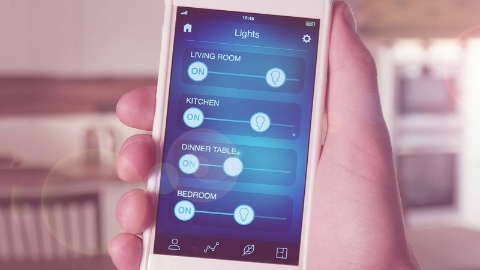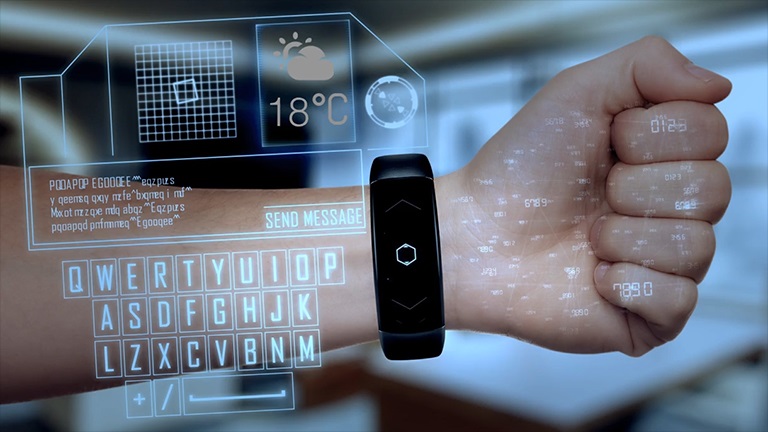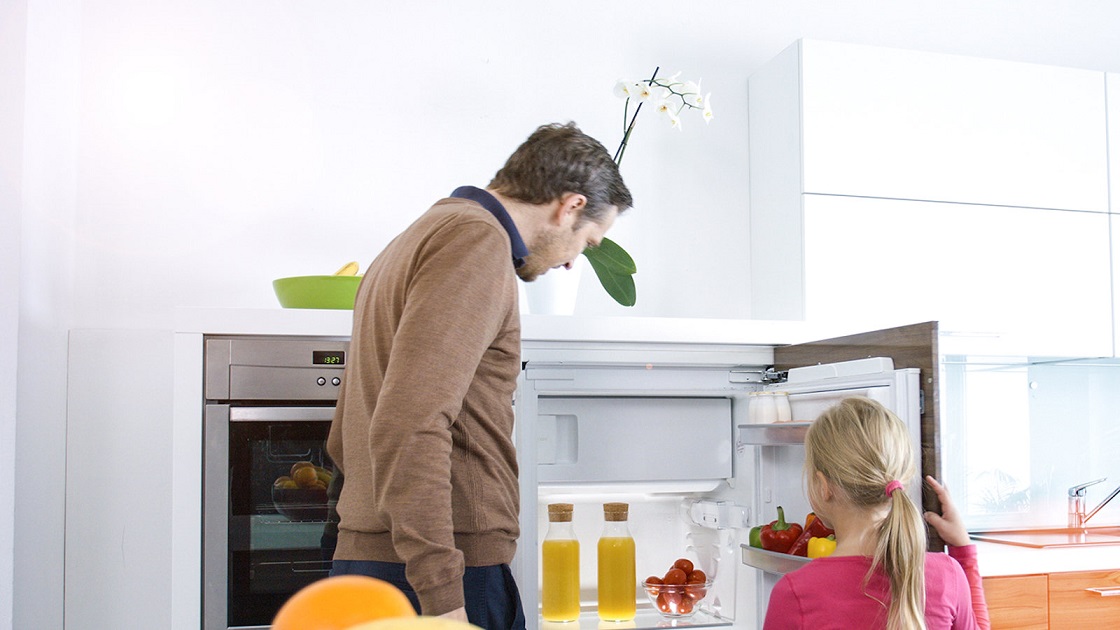
Rapid technological progress, increasing digitization and ever larger data streams: The idea of a connected “smart” home is more topical and enticing than ever. But just what does “smart home” mean? Where do the roots of this technology lie? What are the benefits and risks? What will the smart home of the future look like? We look at the mega trend from various perspectives.
Everyday life made smart
Mr. Watson is late again. He has no time for breakfast. But at least he has the basic necessities: Bang on the minute, the coffee machine supplies his first hot drink, with the defined quantity of milk and froth. Mr. Watson quickly gets ready for a stressful day at the office. The motion sensor is activated and notifies the garage door, which now opens. In all the rush, he has forgotten to switch off the iron and light. No problem, he deals with that while underway via his smartphone. At the office, Mr. Watson activates the washing machine so that the washing is done just in time for when he knocks off work. Have the kids got back from school safely? A glance at the recordings made by the indoor camera in the entrance hall reassures dad.
Shortly before arriving home, Mr. Watson activates the robovac and the “after-work” scenario via smartphone. While the vacuum cleaner does its work, the living room is bathed in a cozy light. The heating ensures a pleasant, predefined temperature, while soft jazz music makes for a relaxed atmosphere. The shutters close later in the evening. That’s the signal for the outdoor camera in the garden to step into action and monitor the patio and garden.
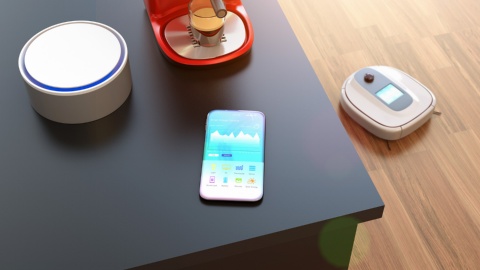
Definition: What is smart home?
“Smart home” denotes the use of technical systems, automated processes and connected, remote-controlled devices in apartments and houses. The main objective of the functions is to improve the quality of life and convenience in the home. Other goals are greater security and more efficient use of energy thanks to connected, remote-controllable devices.
Home appliances, such as the washing machine, lights or the coffee maker, can be time-controlled. Devices like motion sensors, cameras, shutters or thermostats initiate user-programmed processes. The heart of the smart home is the central control unit, with which various smart components are connected and can be controlled from the PC, smartphone or tablet. Common wireless standards such as Wi-Fi, Bluetooth, ZigBee or Z-Wave are used for communication or controlling devices. The central control unit is also termed a hub or gateway.
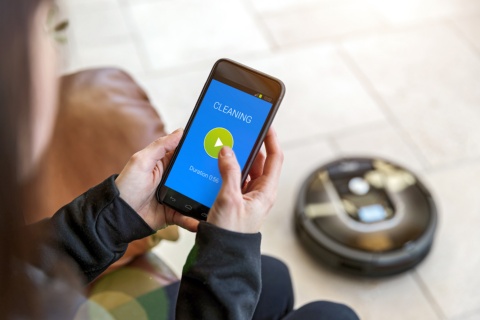
Back to the future: History of smart home
It’s human nature to find ways that make everyday life easier and more pleasant. The area of “home automation” – in effect the predecessor of the smart home – was brought to life through technological progress, in particular through the Internet and computer. Science fiction literature in the 1950s portrayed the first visions of homes that are monitored and controlled fully automatically by machines. The 1999 Disney film “Smart House” was about household computers and the consequences when smart machines take on a life of their own. And Disney proved to be unintentionally visionary in the part of the movie where the house’s intelligent control unit develops the feeling of jealousy. In reality, it will likely be a few years before machines can “generate” emotions – fortunately.
Scientists have already been working for more than 30 years on connecting home appliances and automating their use. Yet it’s only been in the past 15 years that the issue of the smart home has aroused broad public interest. The main reasons: Current challenges as a result of trends like an aging society, greater environmental awareness and the related wish for a sustainable energy supply. Increasing digitization and new means of enhancing convenience in our own four walls were further factors that put the smart home at the center of public interest at the turn of the millennium.
The Fraunhofer inHaus Center, which was opened in Duisburg in 2001, is a lighthouse project in German-speaking countries. The project involves exploring and testing new system solutions and products from the smart home segment in a residential environment. “The House of the Present” in Munich showcased a connected home with centrally controlled electronic processes from 2005 to 2011. The first T-Com House from Deutsche Telekom in Berlin was opened to interested visitors in 2005. The focus of this model project was on connecting various home appliances and controlling them by means of different input devices.
Technological teamwork
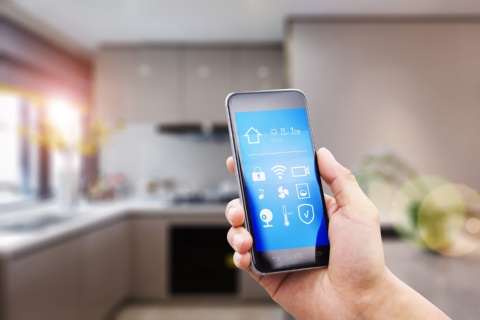
For decades now, a wide range of different home appliances have helped make everyday life more pleasant, speed up processes and hence save time and work. So what additional benefits does the smart home deliver? Without the smart home, the impetus for a machine’s every action has to come from humans, who start processes manually and activate each device individually at the right time. The smart home relieves them of this work by enabling components to communicate with each other. Devices start, control and monitor specific processes in the home on their own, depending on the scenario and on the basis of how they are programmed. Interoperability is the magic word. If devices are interoperable, they can communicate with each other. Only then does the alarm system activate itself when the shutters are being closed. Only then does the heating switch itself off when the window is opened. If there is no interoperability between the elements, the home is simply not smart.
Apart from enhanced convenience, better energy efficiency and greater security are other key aspects. If a smart home thermostat communicates with the window contact via WiFi, it detects a window being opened and thus regulates the temperature. Such a thermostat switches the heating off as soon as it receives information that no one is at home any more from the sensors of other devices. Smart LED lights automatically emit different tones of color depending on the time of day and room. If the outdoor camera on the patio is activated as a result of movements on the property, it also puts the indoor camera on alert, since there might be the threat of a burglary. In homes with elderly inhabitants, a pressure-sensitive mat could notify relatives whether someone has got out of their bed as usual in the morning.
The way to a smart home of our own
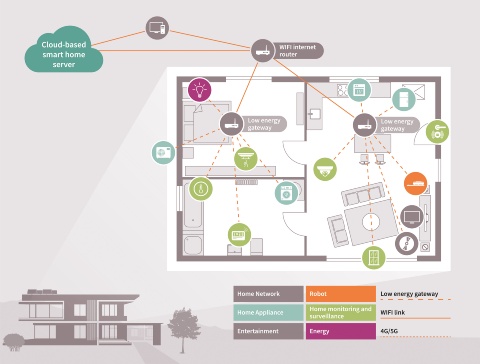
How is a home transformed into a smart home? The required components can be installed and configured without any technical know-how. The following aspects should be taken into account in planning:
- An Internet connection and WiFi are required
- A smartphone or tablet are best suited for controlling and monitoring the devices
- A wireless network is modern, convenient and elegant, but transmission by cable is more secure
- Should the devices be programmable from the central control unit and interoperable, or is a standalone solution enough?
- Are all the devices connected using the same wireless standard (e.g. WiFi)?
- Starter sets are ideal for beginners, but usually only cover a single area: either energy efficiency, security or convenience
- The central control unit should be placed so that all the devices to be addressed are within its radius
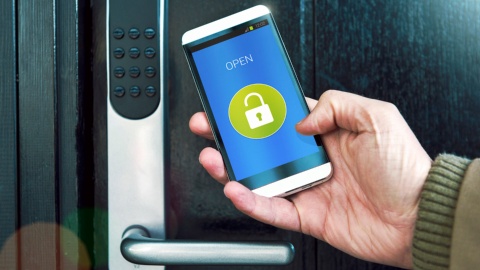
My smart home is my castle – security and data protection
While many technologies deliver benefits, they also entail risks that users should be aware of and minimize. In the case of the smart home, connecting devices and communication by them via wireless connections such as WiFi harbor certain risks. First, personal data may be able to be misused (camera recordings, photos, etc.). Second, there is the risk of cyber criminals manipulating individual smart home components. As part of the latest Cyber Security Insights Report by the U.S. software company Symantec, more than 20,000 smart home users worldwide were surveyed, including 1,000 from Germany. The results show how people sometimes make it easy for online criminals to access data and devices:
The most common problems with securing the smart home
- 10 percent of German users don’t protect their home WiFi with a password
- Every one in ten doesn’t change the preset default password, 35 percent of users worldwide have at least one unprotected device, which makes the household prone to attack by online criminals
- 45 percent of those surveyed don’t know how to secure their WiFi or router
- 60 percent say they are not able to update the firmware
Yet those surveyed are aware of how important it is to protect personal data on the Internet, which also includes protecting the personal data of others. For instance, outside cameras should only film the owner’s property. There are models that allow the user to define the areas that are filmed. Although part of the neighboring property is captured on camera, these areas are grayed out or pixelated. In exceptional cases, public authorities are even allowed to use smart home user data for prosecuting crimes. However, given the current legal position, that’s only imaginable in the case of serious crimes, such as homicide. If the smart home is a rented apartment, access to the data of the window contacts and heating may be conceivable in order to examine whether the tenant has caused mold to grow through incorrect ventilation or there is a building defect.
10 tips for greater security
Just a few steps and rethinking old habits can increase security in the smart home significantly.
- Do not access personal information or social media accounts in unsecured wireless networks
- Install all available updates to security software as soon as possible
- Use the strong encryption method WPA2 for your WiFi
- Disable additional functions, such as a camera or microphone, on devices if you don’t absolutely need them
- Use strong passwords, ideally comprising ten upper-case and lower-case letters, symbols and digits
- Do not open attachments in e-mails from unknown senders without checking them
- Switch off connected devices when you don’t need them
- Change the default login data and passwords stored in the factory settings of the devices
- Switch from WiFi to cable connections where possible
- Use a central control unit with encrypted data transmission and local data storage
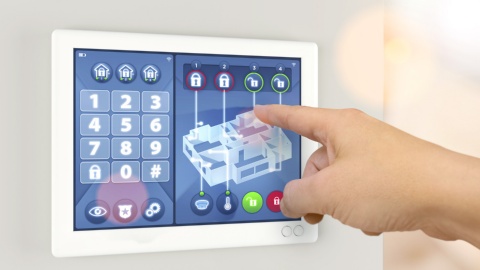
Smart future
The German smart home market will triple in volume to €4.3 billion by 2022, according to the study “The German Smart Home Market 2017-2022. Facts and Figures.” The annual growth rate in the coming five years will thus average 26.4 percent. By comparison: Traditional industries, such as mechanical engineering, have an average maximum growth rate of six percent per annum. The rapid pace of technological progress means many innovative smart home elements will be used in just a few years’ time. IKEA is working on a smart table that detects food with a camera and suggests recipes based on the ingredients. That reduces waste and enables existing food to be used better. In the future, smart mirrors will analyze our skin and recommend care products on that basis.
The popular vision in pop culture of the traditional robot as a home help will become reality in the coming years. The robot does the washing, serves food and drinks, and also provides the inhabitants with useful information on the side. We can follow the baking or cooking process live in the smart oven of the future thanks to a built-in camera. The toilet of the year 2030 will provide users with information on the state of their health and can even conduct pregnancy tests.
The next big evolutionary advance to cater for people’s needs for ecological sustainability and a better quality of life is the concept of the smart city: Residents will commute to the office in autonomous electric cars or on connected e-bikes. Parcels will be delivered by drones. People will travel at high speed, without emitting pollutants, in the hyperloop, a sort of gigantic vacuum tube system in which passengers or goods are conveyed in an airless tube by means of magnetic levitation technology. According to the tech visionary and Tesla CEO Elon Musk, the 570 km trip from San Francisco to Los Angeles will then take just 35 minutes. That means more time for old-fashioned things: a pleasant talk with the passenger, a recuperative midday nap on the way to the next meeting, or a good book made of real paper.
The most important questions and answers at a glance
The garage door opens as soon as you cross the doorstep, you can also switch off the lighting while you are out and about, and the outdoor camera helps ensure you are safe in your own four walls at night: “Smart home” denotes the use of technical systems, automated processes and connected, remote-controlled devices in apartments and houses. Its objective is to improve the quality of life and convenience in the home, as well as residents’ safety and security. Smart home applications also often ensure more efficient use of energy.
There are now a large number of different smart home applications that are all intended to make everyday life easier for us. If, for example, you are out and realize you have left the light on, you can switch it off very easily using your smartphone. Conversely, you can set the heating to the desired temperature or turn on the washing machine before you arrive home. Appliances like a robovac can also be controlled conveniently from your smartphone or tablet. Many components initiate user-programmed processes: If, for example, the shutters are closed, the outdoor camera and motion sensor are activated. Other home appliances, such as lights or the coffee maker, are instead time-controlled, in other words, are switched on and off automatically at defined times.
Smart home devices start, control and monitor specific processes in the home on their own, depending on the scenario and on the basis of how they are programmed. In particular, they relieve people of work if they communicate with each other: Only then does the heating switch itself off as soon as the windows are opened, for example. The heart of this system is a central control unit – also called a hub or gateway – via which the various components are connected with each other. Common wireless standards such as Wi-Fi, Bluetooth, ZigBee or Z-Wave are used for communication and controlling the technology.
What is probably one of the most crucial advantages of a smart home: Users are relieved of a lot of work since they no longer need to start individual devices and processes manually at the right time. At the same time, devices such as motion sensors or cameras ensure greater security by enabling your home to be monitored, even if you are on vacation, for instance. Thermostats or smart lighting also help save energy: The heating switches itself off as soon as a window is opened, for example. An advantage of all that is also that the smart home is relatively easy to set up – even without any technical know-how.
A question many people ask about the smart home is: Just how secure are the applications in my home? Indeed, there is the possibility that personal data may be misused, for example when a camera makes recordings. There is also the risk of hackers gaining access to smart home components and manipulating them. So how can the system’s security be increased? That can be done with just a few steps: Security software should be used and updated regularly, for example. Many users also do not use a password, or only use a weak one, for their network – a problem that can soon be remedied. In addition, individual device functions, such as microphones, can be deactivated if they are not needed.
One thing is very clear: the trend is toward the smart home. The German smart home market alone is expected to triple in volume to €4.3 billion by 2022. The rapid pace of technological progress means many new components will also enter the home in the future. The main focus of that is domestic robots. The next big step toward the future is the smart city, where not only households, but also cars, the infrastructure or drones will be connected with each other.
Last update: November 2017
